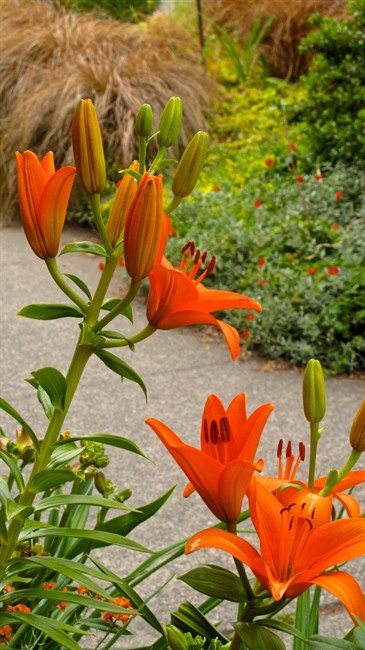Making a yard and a community more beautiful begins at the curb. But that narrow space between sidewalk and street – sometimes called a boulevard, median, hellstrip, parkway, verge or tree belt – is a gardening challenge.

For starters, it’s probably owned by the municipality but falls to the homeowner to maintain. So the first step in caring for it is to sort out what local rules allow.
“You need to go to the city’s website if there are any questions about who owns what,” said Evelyn Hadden, author of the new book “Hellstrip Gardening” (Timber Press). “The zoning laws should be posted online.”
“Some cities have regulations where there can only be lawns there. Some say there can’t be vegetables, but allow some kind of lawn alternative,” she said. “Some communities change their rules when people start growing gardens and the community gets behind them.”
Curb appeal can increase property values for the whole neighbourhood, Hadden said. “Curbside gardeners are pretty generous that way. They’re working for the benefit of everybody.”

Get daily National news
Even seedy-looking parcels can become natural welcome mats when integrated with front yards. Curbside spaces are often heavily trafficked, however, making them tough to cultivate. The ground is hard-packed, and plants can be crushed underfoot. Rocks might add character to the landscape but will dent car doors if placed too near the curb. Tall, dense foliage can be a traffic hazard, preventing passing motorists from seeing pets and children.
Here are some tips for creating a well-tended “hellstrip”:
- Talk with neighbours before getting started. “The tension will come when somebody complains,” Hadden said.
- Be aware of sight lines, especially at intersections. Drivers may have trouble turning safely if something tall is in the way.
- Go with perennials rather than annuals, said Fred Rozumalski, a landscape architect with Barr Engineering Co. in Minneapolis, Minnesota. “Then the soil is only worked once and it’s more secure,” he said. “Dirt won’t run into the street, clogging gutters and storm sewers.”
- Avoid growing vegetables at roadside sites because of pollution, Rozumalski said. “They collect elevated levels of road salt, lead from gasoline and copper from brake linings. I certainly wouldn’t want to eat any food that came off a boulevard.”
- Tree planting is the city’s job, he said. “I’ve seen people make bad choices, planting trees like sugar maples that are difficult to maintain and push up sidewalks. Shrubs should be kept low, no more than 18 inches in height.”
- Be cautious about displaying yard art, Rozumalski said. “You don’t want to distract drivers. It’s probably better if you put those kinds of things deeper into the yard.”
- Boulevards typically are too narrow to be turned into full-blown rain gardens, but they’ll be more environmentally friendly if the soil level is kept at least 2 inches below the curb, he said. “Then the water will collect instead of running off.”

Comments